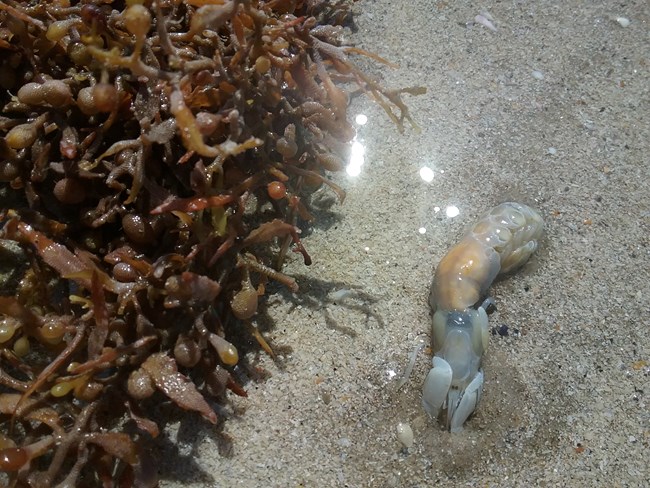
NPS photo by Jamie Kennedy Ghost shrimp are appropriately named because they are totally transparent. Despite their shrimp-like appearance, they are actually more closely related to crabs. Four distinct species of Ghost shrimp have been identified as inhabiting the waters of the Gulf of America. Found at water's edge, they burrow down in seafloor sediments, collecting bits of food. Though they are small, reaching up to three to four inches, Ghost shrimp can dig burrows that can be four feet deep. They are an important part of intertidal ecosystems, because they drive oxygen into the sand as they burrow, which helps organic matter to decompose, enriching the sediment, and ultimately providing food for more creatures.

NPS Photo Outside of the National Seashore, fishermen use Ghost shrimp as bait, using a plunger-like sand pump that sucks the shrimp out of their burrows, but are allowed to collect no more than 20 per day. At the park, these shrimp are protected from being used as bait by fishermen, and extracting the shrimp is prohibited in order to provide a healthy food supply to migratory birds. Even though they are close to the bottom of the food chain, Ghost shrimp are hardy animals, and can survive for up to six days without oxygen. At low tide you can often see little volcano-like holes in the sand, which are Ghost shrimp burrows. At the water's edge, the world underneath your toes is complex and dynamic, and Ghost shrimp are among many other creatures that call this fragile habitat their home.
|
Last updated: February 18, 2025
